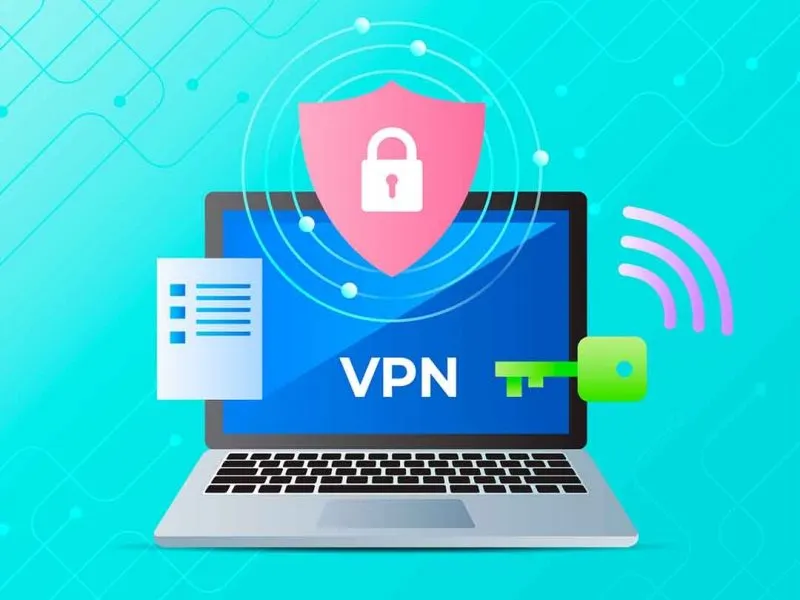
With so numerous people now reliant on a remote workforce, the use of virtual private networks, or VPNs, is at a time high as businesses look to keep personal information and sensitive communications secure. But some security experts express concern over what they regard as outdated technology and are twisting to a Zero Trust model for corporate network access.
Employers conclude it’s necessary, for both productivity and security, to deliver secure access to networks while workers are out of the office or even out of the country. Over the once decade, virtual private networks (VPNs) have gained massive popularity as a cost-effective solution to remote network security interests. But as workforce requirements abide to change briskly, VPNs are proving incapable to catch up.
Then we take a look at the demerits of VPN and why it may be in an association’s best interests and the best interests of customers, to shift to a Zero Trust model of security.
VPNs Versus Zero Trust Models
A conventional VPN works by substantiating a perimeter around means in a network or certain network activity. In turn, VPNs operate within a network — rather than guarding the network itself. Only users who have access to the VPN are capable to interact with anything inside the perimeter. This limited access to the entry point acts as a high-security measure. Similar, traditional VPNs undertake by design that anything that passes through the established boundaries can be trusted.
The zero-trust approach works in primary difference from the VPN model. Rather than establishing a small perimeter within the network, zero trust protects the whole network’s security — and, more particularly, the information assets within it — by individually authenticating every user and device before permitting a given application.
Why VPNs Are Not Sustainable for Modern Workforce Trends
Though perimeter-hung network security was an attainable result in the past, it’s been clear several times that this approach can not keep up with ultramodern workforce tendencies — and the pandemic only fast-tracked this reality.
Presently, remote work is at a time high, global connectivity is anticipated and the number of networks and connections that cyberattackers are eager and ready to take advantage of has exploded. At the same time, attacks are getting more sophisticated and problematic to prevent another reason to enforce strong authentication and identity-based access controls like zero trust.
As workers explore alternate work-from-home venues, while diversifying the types of devices and applications they operate, VPNs are beforehand proving unfit to meet either demand or security needs. With that in mind, heretofore are three common VPN- related challenges that a zero-trust approach can mollify.
Check Our Service are Mean Stack Development | Mern Stack Development
Measured scope: When it comes down to it, VPNs are innately insecure VPNs that group all users into one system; and if an attacker gains access the entire system is endangered. With zero trust, by difference, indeed trusted individualities and devices don’t receive full network access. additionally, strong authentication and nonstop authorization keep attackers who would contravene the system from entering the most sensitive means (or crown jewels).
Inefficiency: Connecting through a VPN is a hefty, resource-ferocious process. Streamlining VPNs, fixing them, and scaling are all processes that necessitate significant IT forces and budgets. Alternately, zero trust’s scaling process can be enabled and managed automatically through a web-hung user interface; and IT companies can effortlessly accommodate security and authorization programs based on real-time requirements.
Slow performance: VPN performance can lag — specifically when seeking access from remote locations. That is because VPNs work by routing all traffic through a data center to also be deciphered. But eventually, this process can take time and affect slow-moving protection. Because zero trust is primarily cloud-predicated, connections are quick and effective.
In the present-day customer-centric climate, companies can not swing to take security dangers that may open doors to corporate and customer data theft. The customary VPN has security vulnerabilities that allow hackers to pick up access to all of a company’s systems and data. By using Zero Trust Network Access, they can guarantee that every attempt to enter corporate networks and applications will be authenticated and verified in real-time, whether they come from outside or inside the network.
Conclusion
Companies seeming to stay ahead of their organizations and workers’ ever-changing demands need to take a step beyond VPNs to assure further comprehensive security. Those who can’t keep up with their workers’ change in work habits will turn gradually vulnerable — as well as under-productive.
While VPNs do offer a degree of connectivity, zero trust is specifically designed to meet ultramodern requirements for visibility and control as well as critical business demands similar as remote work, speed, performance, security, and further. Nevertheless, integrating a zero-trust approach into their security strategy will be critical, If businesses require to protect themselves going forward.







